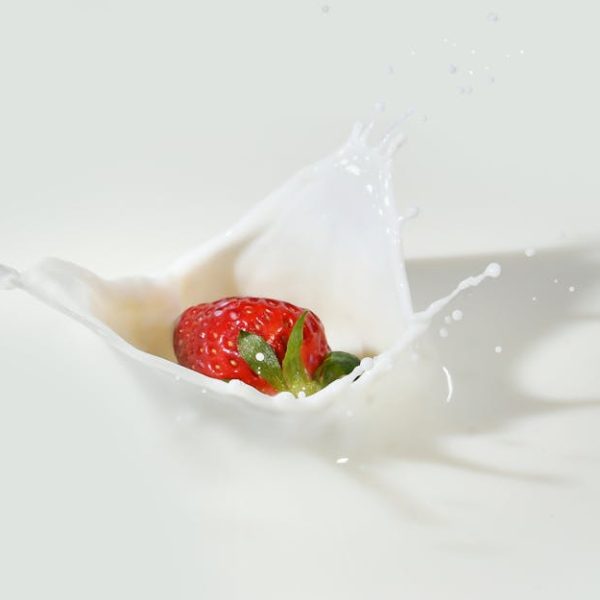Freezing milk can be a highly effective practice that brings you an array of benefits, such as extending the shelf life of fresh milk or reducing wastage. Notably, many types of milk are suitable for freezing, including whole milk, semi-skimmed milk, skimmed milk, and even plant-based alternatives like almond or oat milk. However, the process isn’t as simple as just popping the carton in the freezer. Knowing the ins and outs of freezing milk can make a significant difference in maintaining its freshness and flavor.
Understanding Milk Freezing Basics
Freezing milk doesn’t merely allude to a temperature drop; it brings both physical and chemical changes that can affect its texture and taste. When you freeze milk, it expands and its component – water, fat, protein, and sugar – can separate. This separation often leads to grainy or chunky milk when thawed.
Here are some types of milk that can be successfully frozen:
- Whole milk
- Semi-skimmed milk
- Skimmed milk
- Plant-based milk (almond milk, oat milk, etc.)
Pro tips:
- To minimize changes in texture and taste when freezing milk, shake it well before use after thawing to mix any separated elements.
- Always leave some headspace in the container when freezing milk to allow for expansion.
Choosing the Right Containers and Preparation
The right container plays a crucial role in freezing milk perfectly. You’ll need a container that is both durable to withstand freezing temperatures and air-tight to preserve freshness. Plastic milk containers, glass jars, silicone freezer bags can all be suitable for freezing milk, depending on personal preferences and available freezer space.
Here’s a step-by-step guide on how to prepare your milk for freezing:
- If your milk came in a plastic container, consider pouring it into a heavy-duty freezer bag instead. This eliminates the risk of the container cracking in freezing temperatures.
- If you’re using glass jars, remember to leave about an inch of space at the top, as milk expands as it freezes.
- Ensure the containers or bags are sealed tightly to prevent air from getting in.
Best practices:
- Always cool your milk in the refrigerator before freezing to help it maintain its freshness.
- Don’t forget to label your containers with the freezing date so you can keep track of how long it’s been stored.
Continue with the next 500 words in a second response.
Various Methods for Freezing Milk
Freezing milk might seem like a straightforward task, but there are several methods you can utilize, each with its own advantages and potential downsides. You could consider freezing milk in its original container, dividing it into ice cube trays, or transferring it into smaller, freezer-safe bags. Which method you choose largely depends on your available storage, your freezing needs, and how you plan to use the thawed milk.
Now let’s walk you through a comparison of various freezing methods:
| Method | Pros | Cons |
|---|---|---|
| Original Containers | Convenient, minimum prep needed | Can take up more space in the freezer, not ideal for portion control |
| Ice Cube Trays | Perfect for portion control, uses minimal space | Extra steps needed (pouring and repackaging), more time-consuming |
| Freezer-Safe Bags | Flexible for storage, good for portion control | Requires repackaging, risk of leakage if not sealed tightly |
Pro tips:
- For convenience, consider portioning milk in commonly used measures like 1 cup or 500ml in the freezer-safe bags.
- Freeze milk in ice-cube trays if you love smoothies. They make excellent, nutritious additions!
How to Thaw the Frozen Milk
Thawing frozen milk correctly is just as important as the freezing process itself. Proper thawing ensures the milk retains maximum flavor and texture. Here’s how you do it:
- Start by refrigerating the frozen milk for several hours or overnight. The slow thawing process helps the milk regain its original consistency.
- If you’re in a hurry, you can use the cold water bath method. Fill a bowl with cold water and submerge the frozen milk container in it, changing the water every 30 minutes.
Best practices:
- Never defrost milk in a microwave or hot water, as this can change its texture and lead to nutrient loss.
- Once thawed, shake the milk thoroughly to redistribute any separated fats and proteins.
Checklist:
- Place frozen milk in the refrigerator.
- Let it thaw slowly overnight.
- Shake well before using.
Uses and Limitations of Thawed Milk
Thawed milk may not retain its original texture and influence; hence its utility is a tad bit different from fresh milk. You can use thawed milk for cooking, baking, or making smoothies, where consistency changes might not be as noticeable. But it might not be the best choice for direct consumption or in tea and coffee.
Here’re some recipes where you can use thawed milk:
- Pancakes.
- Muffins.
- Béchamel sauce.
- Smoothies.
- Scrambles and quiches.
Pro tips:
- If the texture change of thawed milk bothers you for straight drinking, consider blending it with a banana or some strawberries. This will improve the texture and taste significantly.
- Always smell and taste a small amount of thawed milk before using it. If it smells or tastes off, discard it.
Key Takeaway:
- Freezing milk extends its shelf life and helps minimize waste. Different types of milk, such as whole, semi-skimmed, skimmed, and plant-based milks, can be frozen.
- The freezing process does bring about physical and chemical changes to milk, often leading to a grainy or chunky texture after thawing. This can be minimized by shaking the milk well before use.
- Selecting the right containers is crucial for effective freezing. Appropriate containers should be durable, air-tight, and should leave some space for milk expansion.
- Numerous methods can be used to freeze milk, each with its own pros and cons. Available storage space, freezing needs, and usage plans govern the choice of method.
- Thawing frozen milk correctly is vital to maintaining its quality. Slow thawing in the refrigerator is recommended.
- Thawed milk may not retain its original texture, hence it’s ideally used for cooking, baking, or making smoothies. Direct consumption or use in tea and coffee may not yield the desired taste and consistency.
It’s wonderful how you can manage your milk supplies more effectively with proper freezing and thawing. With good practices, you can enjoy fresh and flavorful milk whenever you need, without worrying about wastage. Remember, it’s a learning process, and it’s okay if you make a few mistakes along the way. Happy Freezing!
FAQs
Q: Can I freeze flavored milk like chocolate or strawberry milk?
A: Yes, you can. However, you may notice a change in texture when you thaw and consume it later. This can usually be amended with a quick shake or stir.
Q: Is it safe to freeze milk in glass containers?
A: Yes, it is safe to freeze milk in glass jars, but ensure to leave about an inch of space at the top to allow for expansion as milk freezes.
Q: How long does frozen milk last in the freezer?
A: Frozen milk can remain good for up to 6 months in the freezer, but it’s best to consume it within a month for maintaining optimal taste and nutritive value.
Q: Does freezing milk affect its nutritional content?
A: Freezing milk does not significantly diminish its nutritional content. However, improper thawing methods like using a microwave or hot water can lead to nutrient loss.
Q: Can I refreeze milk that has already been frozen and thawed?
A: For quality and safety reasons, it is not recommended to refreeze thawed milk. It’s best to freeze milk in smaller portions to avoid wastage.
Explore more insights and unique tips on our website, and don’t forget to share this article with someone who might find it useful!






